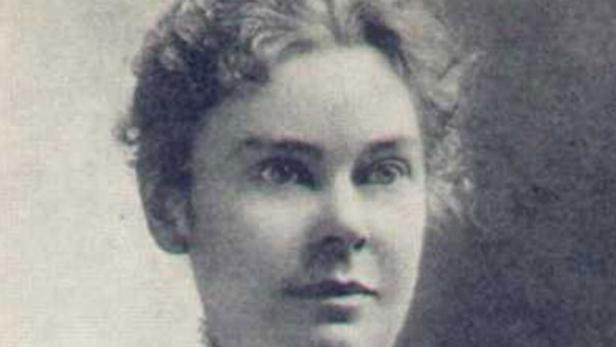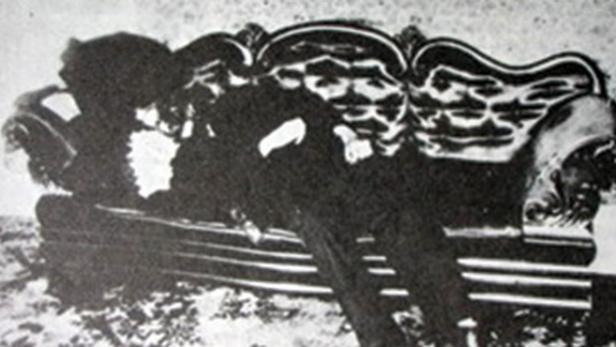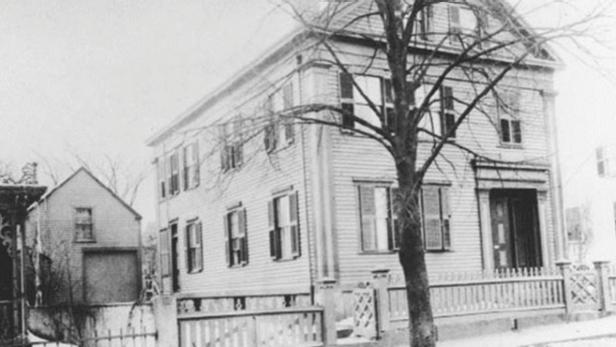10 Little-Known Facts About Lizzie Borden
She looms large in the annals of American lore: Lizzie Borden, the woman who “took an axe” to her parents, bestowing “40 whacks” on one, and “41” on the other.

Wikimedia Commons
She looms large in the annals of American lore: Lizzie Borden, the woman who “took an axe” to her parents, bestowing “40 whacks” on one, and “41” on the other.
On August 4, 1892, Abby and Andrew Borden were found hacked to death in their Falls River, Massachusetts home. Lizzie was tried, and acquitted, for their murders, though speculation about her possible guilt continues to this day.
For more on Lizzie Borden's story, stream the "Lizzie Borden House" episode on Season 6 of Ghost Adventures on discovery+.
For the most part, this is where common knowledge about the enigmatic woman ends. But, of course, there’s more to the mystery. Join us, as we reveal 10 little-known facts about Lizzie Borden.
1. Abby Borden was Lizzie’s stepmother, not her mother

Wikimedia Commons
Andrew Borden
Lizzie’s biological mother, Sarah Borden — also mother to Lizzie’s older sister, Emma — died in 1863. In 1866, Lizzie’s father, Andrew Borden, married Abby Durfee Gray. Lizzie and Abby were not close: Lizzie apparently believed that Abby was after her father’s money. According to the Borden’s live-in maid, Lizzie and Emma rarely took meals with their father and stepmother. Furthermore, in the months before the murders, Andrew had been giving away pieces of real estate to Abby’s family, which likely caused a highly tense situation in the Borden home.
2. Andrew Borden was not a well-liked man
Andrew was a notable penny-pincher: despite his considerable wealth, the Bordens lived in a comparably small home, with no indoor plumbing on the ground and second floors, and only one maid. This frugality apparently also carried over to his business dealings, and he had many enemies: so many, in fact, that Lizzie had once expressed that she feared for his safety, because of how “discourteous” he was.
3. The jump-rope rhyme got the number of whacks wrong

Wikimedia Commons
Borden House Photo
The coroner said that Abby Borden was given 19 whacks, not 40, as the rhyme suggests. Andrew was taken out by only 10 or 11. Furthermore, the Bordens were attacked by blows with a hatchet or “hatchet-like” weapon, not the infamous “axe.”
4. The Borden’s maid was in the house when the murders took place …
… and, inexplicably, she was never investigated—though she was called to testify against Lizzie.
Learn more by watching "The Legacy of Lizzie Borden" episode on Season 2 of Kindred Spirits on discovery+.
5. Lizzie tried to buy poison the day before the murders took place
She attempted, and failed, since she had no prescription, to purchase prussic acid, a.k.a hydrogen cyanide, at a local drugstore on August 3.
6. There was no blood spatter on Lizzie when the police arrived at the home
Investigators later agreed that whoever killed the Bordens would have been covered in blood after the slaying. If Lizzie was indeed the killer, she would have had to do the following: kill Abby, change and hide her blood-soaked clothes (no conclusively bloodstained clothes were ever found), go downstairs, talk with the maid for 30 minutes, kill her father, change once again, hide her clothes and the murder weapon (which was also never conclusively identified), and then sound the alarm about the attack.
Needless to say, the timeline is difficult to accept. What’s more, Lizzie would not only have had to change out of her bloody clothes, she would have had to bathe, and scrub her skin clean of blood. Given her father’s cheapness, the family, as previously mentioned, had no indoor plumbing. Taking a bath would not have been a speedy — or simple — process.
7. There was no physical evidence tying Lizzie to the crime
This being said, it’s important to note that while fingerprinting did exist in 1892, it was new, and authorities were reluctant to use it. In fact, in the Borden murder case, they didn’t.
8. Lizzie was not a reclusive or antisocial person prior to the murders
Despite how she’s been depicted in numerous television shows and movies, Lizzie was a popular and social young woman prior to the murders. She was involved in many organizations related to her church and social movements of the time, such as the Christian Endeavor Society and the Women’s Christian Temperance Union.
9. The jury acquitted Lizzie after deliberating for just an hour and a half
The trial began on June 5, 1893 and ended on June 20.
10. Lizzie was shunned after the trial, even though she was acquitted
Lizzie stayed in Falls River after the trial, moving into a large house with her sister. Despite her acquittal, she was ostracized from the Falls River community and society at-large. Public dislike for Lizzie Borden only increased when she made headlines again in 1897. This time, she was accused of shoplifting in Rhode Island.
This article originally appeared on The Lineup.


![Mei Li Haskell [left] and her parents YanXiang Wang [middle] and Gaoshan Li [right] went missing in November 2023. Mei's husband, Samuel Haskell, Jr., is accused of murdering them.](http://investigationdiscovery.sndimg.com/content/dam/images/investigationdiscovery/crimefeed/legacy/2023/11/los-angeles-police-department-mei-li-haskell-yanxiang-wang-gaoshan-li-112123.png.rend.hgtvcom.231.174.suffix/1700583513548.png)




![Michael Peterson [left] and Kathleen Peterson [right] smile. He is wearing sunglasses, a white shirt, and a hat and she is wearing a black shirt.](http://investigationdiscovery.sndimg.com/content/dam/images/investigationdiscovery/crimefeed/legacy/2022/04/an-american-murder-mystery-the-staircase-S1-E1.png.rend.hgtvcom.231.174.suffix/1651263591477.png)

